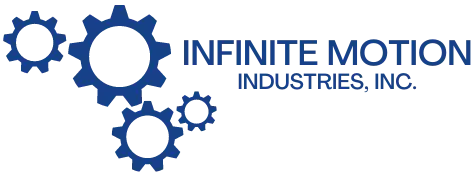Downtime is the enemy of productivity in any manufacturing facility. When production equipment goes down, it not only affects production output but also can have ripple effects throughout the entire operation. Unfortunately, downtime is often unavoidable, but there are steps that production managers can take to reduce its frequency and duration. This white paper will explore best practices for reducing downtime and provide guidance for collaborating with outside resources to help achieve that goal.
Identify the Root Causes of Downtime
The first step in reducing downtime is to identify the root causes. This may include mechanical failures, operator error, material shortages, or maintenance issues. Once the cause(s) of downtime are identified, it becomes easier to develop a strategy for addressing them. A detailed analysis of downtime history should be performed to uncover any patterns or trends that could be indicators of underlying problems.
Develop a Preventative Maintenance Plan
Preventative maintenance is one of the most effective strategies for reducing downtime. By performing regular maintenance on production equipment, potential issues can be identified and addressed before they become major problems. This can be done in-house, or an outside resource can be brought in to provide maintenance services. A comprehensive preventative maintenance plan should include scheduled maintenance tasks, such as lubrication, filter changes, and equipment inspections.
Collaborate with Outside Resources
Collaborating with outside resources can be a valuable strategy for reducing downtime. Equipment manufacturers, maintenance and repair companies, and consulting firms can provide expertise and support that may not be available in-house. They can offer a fresh perspective on the operation, identify potential issues, and suggest strategies for improvement. In addition, they may have specialized tools and equipment that can be used to diagnose and repair problems quickly.
Train Operators and Maintenance Staff
Operator error and inadequate maintenance can contribute to downtime. By providing comprehensive training to both operators and maintenance staff, they can be empowered to identify and address potential issues before they become major problems. Training can include equipment operation and maintenance, as well as safety procedures. It is important to provide ongoing training to ensure that staff remains up-to-date on the latest procedures and techniques.
Use Technology to Monitor Equipment
Advances in technology have made it possible to monitor equipment remotely. By using sensors and other monitoring tools, it is possible to detect potential issues before they become major problems. This can be especially useful for equipment that is critical to production. Early detection can lead to faster repair times and reduced downtime.
Implement a Continuous Improvement Program
Continuous improvement should be an ongoing process in any manufacturing operation. By regularly reviewing processes and procedures, potential issues can be identified and addressed before they become major problems. A continuous improvement program can involve staff at all levels of the organization, from the shop floor to the executive suite. By soliciting feedback from staff, it is possible to identify potential issues that may not be immediately apparent to management.
Create a Culture of Safety
Safety should be a top priority in any manufacturing operation. By creating a culture of safety, staff can be empowered to identify potential safety hazards and take steps to address them. This can include providing safety training to staff, implementing safety procedures and protocols, and regularly reviewing safety policies. A safe working environment not only reduces the risk of injury but also can lead to increased productivity and reduced downtime.
Maintain Spare Parts Inventory
Having spare parts on hand can help reduce downtime by allowing for quick repairs. It is important to maintain an inventory of commonly used spare parts, as well as any parts that are critical to production. Spare parts should be organized and easily accessible to maintenance staff.
Perform Root Cause Analysis on Major Downtime Events
When a major downtime event occurs, it is important to perform a root cause analysis to identify the underlying issues. This can involve a detailed review of equipment, procedures, and staff
